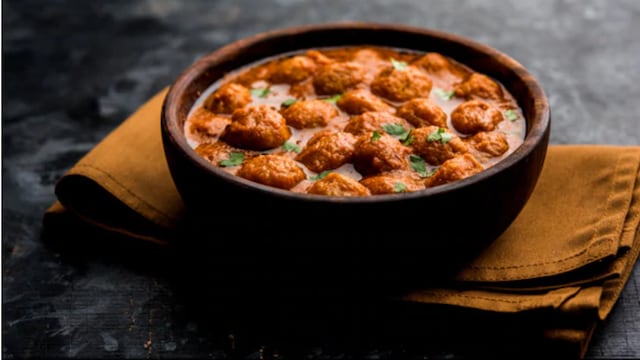Source :NEWS18 NEWS
Last Updated:May 22, 2025, 17:43 IST
Soy is no longer just the fallback for vegetarians or a fringe ingredient in health food aisles. It’s evolving into something far more interesting and modern.
In kitchens across India, soy is proving itself to be unusually accommodating
Let’s be honest—soy hasn’t always had the most glamorous reputation. For many, it was either a bland chunk in curry or a chalky protein shake best forgotten. But that image is quietly changing. Without fanfare, soy has slipped into our freezers, our lunchboxes—even our desserts. The transformation hasn’t been loud, but it has been significant.
This “wonder bean,” as many call it, is no longer just the fallback for vegetarians or a fringe ingredient in health food aisles. It’s evolving into something far more interesting and modern. Modern, in the sense that it fits where we are: conscious of our nutrition, impatient with fads, rooted in flavour, and not willing to sacrifice cultural comfort for coolness. Chef Rakhee Vasvani shares all you need to know:
Recommended Stories
When Functionality Gets Creative
In kitchens across India, soy is proving itself to be unusually accommodating. Stir it into your pancake batter for an extra protein kick, blitz silken tofu into a creamy pasta sauce, or marinate soy chunks with ginger and garlic, roast them, and you’ll have something your dinner guests won’t believe didn’t come from a tandoor.
But here’s where things get more interesting. Beyond its flexibility, soy delivers something India’s diet often lacks: complete, high-quality protein. Most of our meals—even the hearty ones—are heavy on carbs and light on protein variety. Soy doesn’t just fill the gap; it improves the equation. According to the “Soy – A Superfood & Wonder Bean” report by the Protein Foods and Nutrition Development Association of India in collaboration with Right to Protein, soy’s PDCAAS score of 1.0 places it on par with eggs and milk in terms of quality.
And it’s not just tofu. Soy protein isolate (90% protein by weight), soy flour, soy milk, and textured vegetable protein (TVP) are no longer niche. They’re entering the mainstream—and our parathas, pulaos, cutlets, smoothies, and cookies.
But Is It Enough?
Nutritionists have long advocated for soy because it checks all the boxes: complete amino acid profile, cholesterol-lowering potential, gut-friendly, heart-friendly, and climate-friendly. What’s changed, however, is not just the science. Soy is no longer content being just good for you. It wants to taste good too.
With the right spice blend, soy chunks can stand shoulder to shoulder with meat in gravies. When pressed and fermented, it turns into tempeh, a nutty, textured ingredient that’s now showing up in Indo-Asian fusion recipes from Bengaluru to Berlin. You’ll find soy keema on café menus, soy cream cheese in bakery kitchens, and soy lattes being sipped at highway dhabas. This isn’t accidental. It’s the result of smart food innovation finally catching up to what soy has been capable of all along.
The Protein Gap Is Still Real
Let’s not lose sight of the problem we’re still solving: over 80% of Indians don’t meet the daily recommended intake of protein. Among vegetarians especially, the shortfall is chronic. We over-index on cereals and pulses, which, while filling, don’t quite meet the threshold for complete protein. Animal protein—while a common source—is sometimes expensive or not aligned with everyone’s dietary preferences.
Soy sits at a rare intersection: it is affordable, accessible, and adaptable. It’s one of the very few plant-based proteins that doesn’t need to be “combined” with something else to complete its profile. And that matters—especially when you’re trying to sneak better nutrition into everyday meals without making a show of it.
Fortify a basic roti with soy flour. Mix a spoonful of soy isolate into your morning porridge. All of this is doable in homes across economic and cultural lines.
No Longer Just for the “Health-Conscious”
Perhaps the biggest shift I’ve noticed is in attitude. People aren’t adding soy to their diets because a dietician told them to. They’re doing it because it makes the dish better. Soy yogurt doesn’t just mimic dairy—it brings a lightness to desserts. Soy mince holds together beautifully in kebabs. And unlike many other meat substitutes, it absorbs flavour like a pro.
We’ve also moved beyond the binary of “Indian” and “Western” food. A soy tikka masala is as relevant as soy hummus. Soy miso soup shares pantry space with soy bhurji. This isn’t a passing wave. It’s a direction we’re headed in—with food that works for our health, our taste preferences, and, not incidentally, our climate.
There’s no shortage of protein powders or fortified snacks on the market. But soy is already here—in traditional foods and modern forms. It’s in the chapati, in the sweets, in the burger. Sometimes visible, sometimes not—but always quietly making your meal just a little better.
- First Published:
May 22, 2025, 17:43 IST
SOURCE : NEWS 18








